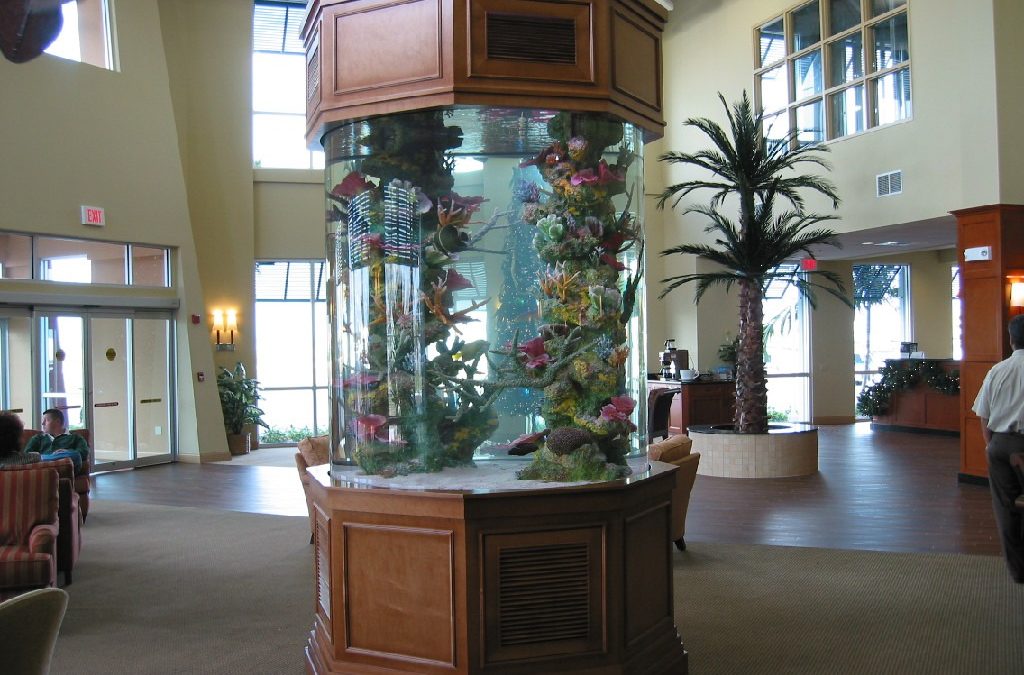Performing regular water changes is an essential part of maintaining a healthy saltwater aquarium. Water changes help remove impurities, replenish essential elements, and maintain stable water parameters. Serving Hartford, CT, Normal Aquatics provides expert saltwater aquarium water changes, as well as fish tank maintenance services in Hartford County and throughout the state of Connecticut. Here’s a step-by-step guide on how to do a water change on a saltwater aquarium:
Materials and Equipment You’ll Need:
- Salt Mix: Ensure you have high-quality marine salt mix suitable for saltwater aquariums.
- Clean Water: Use purified or dechlorinated freshwater. You may need to prepare this water in advance.
- Aged Water: Allow the freshwater to age for 24 hours to stabilize the pH and temperature.
- Siphon or Gravel Vacuum: A siphon or gravel vacuum is used to remove water and debris from the substrate.
- Buckets: You’ll need two or more buckets—one for the old tank water and one for the new saltwater mix.
- Aquarium Thermometer: To monitor the water temperature.
- Hydrometer or Refractometer: To measure the salinity of the new saltwater mix.
- Water Conditioner: If your tap water contains chlorine or chloramines, you’ll need a water conditioner to remove these chemicals.
Step-by-Step Instructions:
- Prepare Freshwater: If you are using tap water, dechlorinate it using a water conditioner. Ensure it is at the correct temperature (usually around the same as your aquarium water).
- Mix Saltwater: In a clean, dedicated container, mix the marine salt mix with freshwater according to the manufacturer’s instructions. Use a hydrometer or refractometer to measure and adjust the salinity to match that of your aquarium.
- Turn Off Equipment: Before you start the water change, turn off all equipment in your aquarium, including heaters, pumps, and skimmers.
- Siphon Old Water: Using a siphon or gravel vacuum, remove 10-20% of the old aquarium water. While doing this, vacuum the substrate to remove debris and detritus.
- Clean Equipment: If your equipment, such as skimmers or filters, has collection cups or cartridges, clean or replace them as needed.
- Add New Saltwater: Slowly and gently add the newly mixed saltwater to the aquarium. It’s essential to add the water slowly to prevent disturbing the substrate and fish.
- Check Temperature and Salinity: Use a thermometer to verify that the new water temperature closely matches the tank temperature. Also, check the salinity to ensure it matches your aquarium’s salinity levels.
- Turn Equipment Back On: Once the new water is added, turn your equipment back on. Ensure that the water is circulating and that your equipment is functioning correctly.
- Monitor and Test Water: After the water change, monitor the aquarium closely for the next few hours to ensure that the fish and invertebrates are behaving normally. Test water parameters (e.g., salinity, pH, ammonia, nitrites, nitrates) to confirm they remain stable.
- Dispose of Old Water: Dispose of the old tank water responsibly. It can be used for gardening or other purposes if it’s free of any chemicals or contaminants.
- Repeat as Necessary: The frequency of water changes will depend on your specific setup and water quality. Typically, a 10-20% water change is done every 2-4 weeks, but this can vary.
Regular water changes are essential for maintaining a stable and healthy saltwater aquarium. They help dilute waste products, replenish essential minerals, and provide a clean and stable environment for your aquatic inhabitants. If you are seeking the best saltwater aquarium maintenance company in the Hartford County area, you can contact us today at (203) 292-5922 to schedule a quick no-cost quote! You can click the following link to view our many 5-star Google reviews we have received from satisfied clients.

